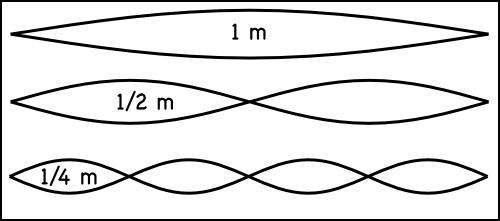Mark French has an excellent YouTube channel on Mechanical Engineering, including the above video on Math and Music. The video describes the mathematical relationships between musical notes.
Given the sequence of notes: C, C#, D, D#, E, F, F#, G, G#, A, A#, B, C.
Let the frequency of the C note be f0, the frequency of C# be f1 etc.
The ratio of any two successive frequencies is constant (r). For example:
![]()
so:
![]()
We can find the ratio of the first and third notes by combining the first two ratios. First solve for f1 in the first equation:
![]()
solving for f1,
![]()
now take the second ratio:
![]()
and substitute for f1,
![]()
which gives:
![]()
We can now generalize to get the formula:
or
where,
- n – is the number of the note
From this we can see that comparing the ratio of the first and last notes (f12/f0) is:
![]()
Now, as we’ve seen before, when we talked about octaves, the frequency of the same note in two different octaves is a factor of two times the lower octave note.

So, the frequency ratio between the first C (f0) and the second C (f12) is 2:
![]()
therefore:
![]()
so we can now find r:
![]()
![]()
Finally, we can now find the frequency of all the notes if we know that the international standard for the note A4 is 440 Hz.
Mark French has details on the math in his two books: Engineering the Guitar which is algebra based, and Technology of the Guitar, which is calculus based.






